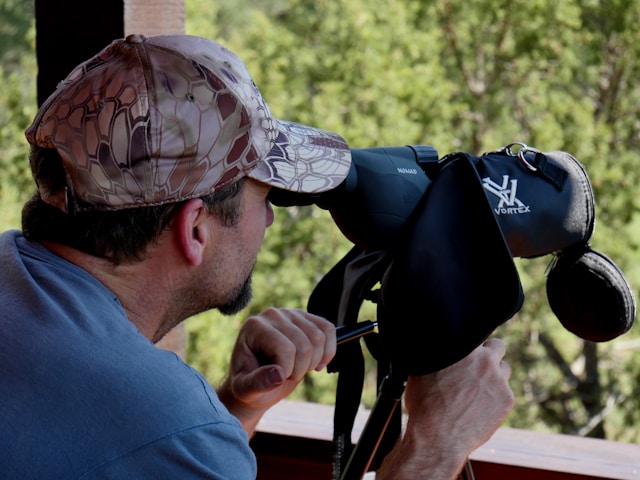Spotting scopes are essential for outdoor enthusiasts, hunters, bird watchers, and target shooters. They offer unparalleled magnification and clarity, allowing users to observe distant objects with incredible detail. Understanding the key features of spotting scopes, such as magnification and lens coating, is crucial for maximizing their performance in various conditions.
Magnification Explained
Magnification is one of the most critical factors when choosing spotting scopes Canada. It determines how much closer an object will appear compared to the naked eye. Spotting scopes typically come with variable magnification settings, allowing users to zoom in and out as needed. When evaluating magnification, it’s essential to understand the two numbers associated with spotting scopes, such as 20-60x or 15-45x. The first number represents the lowest magnification setting, while the second indicates the highest.
Lens Coating and Its Importance
Lens coating plays a crucial role in maximizing the performance of a spotting scope. It helps improve light transmission, reduce glare, and enhance image contrast and clarity. Spotting scopes may feature various types of lens coatings, including fully coated, multi-coated, and fully multi-coated.
- Fully Coated: Spotting scopes with fully coated lenses have a single layer of anti-reflective coating on at least one lens surface. While they offer some improvement in light transmission and image quality compared to uncoated lenses, they may still suffer from glare and reduced clarity, especially in challenging lighting conditions.
- Multi-Coated: Multi-coated lenses have multiple layers of anti-reflective coating on one or more lens surfaces. This helps minimize glare, increase light transmission, and improve image contrast. Spotting scopes with multi-coated lenses deliver better performance than those with fully-coated lenses, making them suitable for outdoor activities.
- Fully Multi-Coated: Fully multi-coated lenses feature multiple layers of anti-reflective coating on all air-to-glass surfaces. This provides the highest light transmission, clarity, and contrast, producing crisp and vibrant images even in low-light conditions. Spotting scopes equipped with fully multi-coated lenses are ideal for serious outdoor enthusiasts and professional users who demand uncompromising performance.
Field of View and Eye Relief
In addition to magnification and lens coating, other factors contribute to a spotting scope’s overall performance. One such factor is the field of view (FOV), which refers to the width of the area visible through the scope at a specific distance. A wider FOV allows users to observe more of the surrounding area, making locating and tracking subjects easier, especially in fast-paced environments. Eye relief is another critical consideration, particularly for users who wear glasses or goggles. Eye relief refers to the distance between the eyepiece and the observer’s eye at which the entire field can be seen without vignetting or darkening around the edges. Spotting scopes with extended eye relief are more comfortable, providing ample space for users to position their eyes without discomfort.
Weather Resistance and Durability
Outdoor enthusiasts often encounter various weather conditions, from bright sunshine to heavy rain or snow. Therefore, choosing a spotting scope that can withstand the elements and maintain optimal performance in any environment is essential. Look for spotting scopes with weather-resistant construction, such as waterproof and fog-proof designs, to ensure reliable operation even in harsh conditions. Durability is another crucial factor, especially for users who frequently venture into rugged terrain or rough environments. Spotting scopes from high-quality materials, such as aircraft-grade aluminum or magnesium alloy, offer superior durability and long-term reliability. Additionally, rubber armor coatings protect against bumps, impacts, and scratches, ensuring that your spotting scope remains pristine for years.
Mounting Options and Accessories
The mounting system is crucial in stability and ease of use when using a spotting scope. Many spotting scopes come with a built-in mounting foot or tripod adapter, allowing users to attach them to a tripod for steady viewing. Additionally, specialized mounts, such as window or car window mounts, are available for observation from vehicles or fixed positions. Accessories like smartphone adapters enable users to capture photos or videos through the spotting scope, adding versatility and functionality to their outdoor adventures. Consider your preferred mounting method and any additional accessories you may need to enhance your spotting scope experience further.
Conclusion
Understanding the fundamentals of spotting scopes, including magnification and lens coating, is paramount for optimizing their performance across various outdoor activities. Magnification determines how closely objects appear, while lens coatings enhance light transmission and image quality. Factors like field of view, eye relief, weather resistance, durability, and mounting options contribute to a spotting scope’s overall usability and effectiveness. By considering these aspects carefully, outdoor enthusiasts can select the proper spotting scope to meet their specific needs and preferences, ensuring enjoyable and rewarding experiences outdoors.



